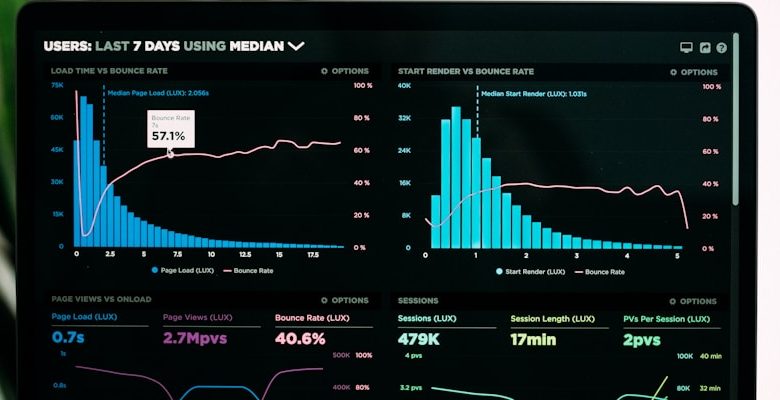Blockchain and GDPR: How to Handle Data Privacy

- Understanding the intersection of blockchain technology and GDPR regulations
- Challenges of maintaining data privacy in a decentralized blockchain network
- Strategies for achieving GDPR compliance while using blockchain technology
- Impact of GDPR on blockchain-based businesses and applications
- Balancing transparency and anonymity in blockchain transactions under GDPR
- Key considerations for data controllers and processors in the era of blockchain and GDPR
Understanding the intersection of blockchain technology and GDPR regulations
Blockchain technology has revolutionized many industries with its decentralized and secure nature. However, when it comes to data privacy, there are certain challenges that need to be addressed, especially in light of the General Data Protection Regulation (GDPR) set forth by the European Union.
One of the key issues when it comes to the intersection of blockchain technology and GDPR regulations is the concept of data privacy and the right to be forgotten. Blockchain is inherently transparent and immutable, which means that once data is recorded on the blockchain, it cannot be altered or deleted. This poses a challenge when it comes to complying with GDPR regulations, which require companies to allow individuals to have their personal data erased upon request.
To address this challenge, companies utilizing blockchain technology need to implement solutions that allow for the deletion of personal data while still maintaining the integrity and security of the blockchain. This can be done through the use of encryption techniques, off-chain storage of sensitive data, and the implementation of privacy-enhancing technologies such as zero-knowledge proofs.
Additionally, companies need to ensure that they are transparent with users about how their data is being used and stored on the blockchain. Transparency is a key principle of GDPR, and companies can demonstrate compliance by providing clear and easily accessible information about their data processing practices.
Overall, understanding the intersection of blockchain technology and GDPR regulations is crucial for companies looking to leverage the benefits of blockchain while also protecting the privacy rights of their users. By implementing the right technical and organizational measures, companies can ensure compliance with GDPR regulations while still reaping the benefits of blockchain technology.
Challenges of maintaining data privacy in a decentralized blockchain network
Ensuring data privacy in a decentralized blockchain network poses several challenges that need to be addressed. One of the main issues is the transparency of the blockchain itself, as all transactions are publicly available for anyone to view. This raises concerns about data privacy and the protection of sensitive information.
Another challenge is the immutability of blockchain data, once a transaction is recorded on the blockchain, it cannot be altered or deleted. This poses a risk in terms of data privacy compliance, as it may be difficult to erase personal data that is no longer needed or that has been collected unlawfully.
Furthermore, the decentralized nature of the blockchain network makes it challenging to identify the data controller and data processor responsible for compliance with data protection regulations such as the General Data Protection Regulation (GDPR).
In conclusion, maintaining data privacy in a decentralized blockchain network requires careful consideration of these challenges and the development of innovative solutions to ensure compliance with data protection regulations.
Strategies for achieving GDPR compliance while using blockchain technology
When it comes to achieving GDPR compliance while utilizing blockchain technology, there are several strategies that can be implemented to ensure data privacy is maintained. One of the key considerations is the concept of data minimization, which involves only storing the necessary information on the blockchain to reduce the risk of non-compliance. Additionally, utilizing encryption techniques can help to secure the data stored on the blockchain, ensuring that it remains confidential and protected from unauthorized access.
Another important strategy is the implementation of access controls, which limit who can view and interact with the data on the blockchain. By restricting access to only authorized individuals, organizations can reduce the risk of data breaches and maintain compliance with GDPR regulations. Additionally, utilizing smart contracts can help automate data management processes, ensuring that data is handled in a compliant manner at all times.
Furthermore, organizations should consider conducting regular audits of their blockchain systems to ensure compliance with GDPR regulations. By regularly reviewing and assessing their data processing activities, organizations can identify and address any potential compliance issues before they escalate. Additionally, establishing clear data governance policies and procedures can help ensure that data is handled in a compliant manner throughout its lifecycle on the blockchain.
Impact of GDPR on blockchain-based businesses and applications
When it comes to the impact of GDPR on blockchain-based businesses and applications, there are several key considerations to keep in mind. The General Data Protection Regulation (GDPR) is a comprehensive data privacy regulation that affects how personal data is collected, processed, and stored. For blockchain-based businesses, which rely on decentralized, transparent, and immutable ledgers, ensuring compliance with GDPR can be a challenge.
One of the main challenges that blockchain-based businesses face in relation to GDPR is the issue of data privacy. While blockchain technology offers a high level of security and transparency, it can also make it difficult to comply with GDPR’s requirements around data protection and privacy. For example, GDPR requires that individuals have the right to access, correct, and delete their personal data. However, on a blockchain, once data is recorded, it cannot be easily deleted or modified.
Another challenge is the issue of data minimization. GDPR requires that organizations only collect and store the data that is necessary for the purposes for which it is processed. However, blockchain ledgers are typically designed to store large amounts of data in a decentralized manner, which can make it difficult to comply with the principle of data minimization.
Despite these challenges, there are ways that blockchain-based businesses can address the impact of GDPR. One approach is to use privacy-enhancing technologies, such as zero-knowledge proofs or homomorphic encryption, to ensure that personal data is protected while still allowing for the benefits of blockchain technology. Additionally, businesses can implement privacy by design principles, such as conducting data protection impact assessments and incorporating privacy features into their blockchain applications.
Overall, while GDPR presents challenges for blockchain-based businesses and applications, it also provides an opportunity to enhance data privacy and security in the digital economy. By taking a proactive approach to compliance and implementing privacy-enhancing technologies, businesses can navigate the complexities of GDPR while still leveraging the benefits of blockchain technology.
Balancing transparency and anonymity in blockchain transactions under GDPR
When it comes to blockchain transactions and the General Data Protection Regulation (GDPR), finding a balance between transparency and anonymity is crucial. While blockchain technology offers transparency by design, it also presents challenges in terms of GDPR compliance due to the immutable nature of the data stored on the blockchain. This means that personal data shared on a blockchain network can be visible to all participants, potentially violating GDPR regulations.
One way to address this issue is by implementing privacy-enhancing technologies (PETs) such as zero-knowledge proofs or homomorphic encryption. These tools allow for the verification of transactions without revealing sensitive information, thus preserving anonymity while ensuring compliance with GDPR requirements. By using PETs, organizations can protect the privacy of individuals while still leveraging the benefits of blockchain technology.
Another strategy to balance transparency and anonymity in blockchain transactions under GDPR is through the use of permissioned blockchains. Unlike public blockchains where anyone can participate, permissioned blockchains restrict access to authorized users only. This helps organizations control who can view and validate transactions, reducing the risk of exposing personal data to unauthorized parties.
Overall, achieving compliance with GDPR regulations while leveraging the benefits of blockchain technology requires a thoughtful approach to balancing transparency and anonymity. By implementing privacy-enhancing technologies and utilizing permissioned blockchains, organizations can navigate the complexities of data privacy in the blockchain ecosystem effectively.
Key considerations for data controllers and processors in the era of blockchain and GDPR
When it comes to navigating the intersection of blockchain technology and the General Data Protection Regulation (GDPR), data controllers and processors must be mindful of several key considerations. By understanding these factors, organizations can effectively manage data privacy in compliance with the regulatory requirements of the GDPR.
- Data Minimization: One crucial aspect for data controllers and processors is to practice data minimization. This involves collecting only the necessary personal data required for a specific purpose, thereby reducing the risk of non-compliance with GDPR regulations.
- Transparency: Transparency is essential in ensuring data subjects are informed about how their personal data is being processed on the blockchain. Data controllers and processors should provide clear and accessible information regarding data processing activities to maintain GDPR compliance.
- Security Measures: Implementing robust security measures is imperative for safeguarding personal data stored on the blockchain. Encryption, access controls, and regular security audits are vital components in protecting data integrity and confidentiality.
- Data Subject Rights: Data controllers and processors must respect data subject rights, such as the right to access, rectification, and erasure. Establishing procedures to address data subject requests in a timely manner is crucial for GDPR compliance.
- Data Protection Impact Assessments (DPIAs): Conducting DPIAs can help organizations identify and mitigate privacy risks associated with blockchain projects. By assessing the impact of data processing activities on individuals’ privacy, data controllers and processors can proactively address GDPR compliance concerns.
Overall, data controllers and processors must proactively address data privacy challenges posed by blockchain technology within the framework of the GDPR. By prioritizing data minimization, transparency, security measures, data subject rights, and DPIAs, organizations can navigate the complexities of data protection in the era of blockchain and GDPR.



